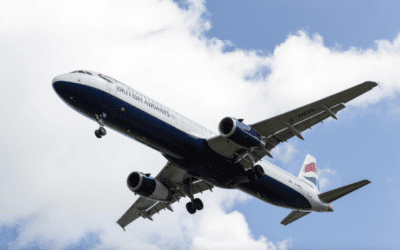
After a wild week of repeated snowstorms, New England’s ski and snowboarding terrain is beckoning with a hefty blanket of pre-Christmas snow. Plus, with fewer seats carrying skiers and snowboarders to the West and the dropping price of gas, it looks like a banner year for New England’s resorts that have their own special mountain magic and provide a far different experience from the resorts out west.
Ever wonder why many of the best skiers and snowboarders in America come from the East Coast? It is a simple as learning to ski and ride where the trails and snow conditions prepare everyone for the full range of winter.
Every season, I set aside a few days to ski in New England. I have managed to master skiing on changing conditions and listen to the mountains. Early memories are faint, but they are compounded and cleared: twisting around the narrow turn at the top of Nosedive and crossing over to for a long cruise down Gondolier or Perry Merril at Stowe; skiing a different resort with a new view of Mt. Washington every day of the week; rambling through the grand old Mount Washington Resort; carefully skirting The Snowfields down High Rigger in Sugarloaf, Maine.
The more one skis in New England, the more one bonds with the surrounding nature. Here, skiing invites skiers to dance with the surrounding world powered by gravity and controlled with balance and grace. The more confident skiers or snowboarders are with themselves and this crispy winter world the more they can step to the mountain music. Every New England trail conjures its own tune and demands its own slide, spin and swing. Here trails twist and turn to nature’s rhythm.
That may be the biggest difference between The East and The West. In The West skiers talk about sucking up vertical, deep powder, skier days and chairlift speed. Skiing is a commodity to be consumed.
New England has managed to keep their mountains a kind of locals’ sport playground, where more folk drive in for a few days from a few hours distance than fly in from across the country. The small towns have more of a seasoned symbiotic relationship with the mountains, more like Europe where the resorts also grew up around the villages rather than having a new town sheetrocked and stapled together at the base of a new series of lifts. It all makes for a very different world from the big western purpose-built resort.
Picture post-card villages like Stowe, Waitsfield, Wilmington, Woodstock, Manchester, North Conway, and Bethel all have their rustic charm. Visitors and townsfolk alike wander down sidewalks, their breath steaming in the brisk air. Streets are lined with old houses and historic hotels. Restaurants and pubs are tucked behind preserved New England façades and old general stores sell merchandise next to small jewelry makers and craftsmen. Even the aromas of wafting wood smoke, morning pastries and evergreens add to the atmosphere. And it’s all there without feeling the design was by Disney.
No one has yet found a way to replicate the New England country inn, B&B or sprawling grand hotel. They are an experience that can only be created over years. The Inn at Round Barn Farm just outside of Waitsfield in Vermont, may be one of the country’s most spectacular with rooms that elicit ooo’s and aaah’s from every visitor, but haven’t lost their home-as-you-dreamed-it-could-be essence. Stonehurst Manor in North Conway provides a turn-of-the-century glimpse into the lifestyle of America’s richest families. The Mount Washington Hotel at Breton Woods is a spectacular and elegant hotel where international history was played out with the world’s leaders.
In New England, village, inn, cross-country trail system and mountain are an interactive experience to savor. Some of America’s most picturesque and best-known cross-country trail systems wind from B&B to country inn weaving a natural network between towns. The unique network provides a cross-country adventure that combines exercise and nature with warm New England hospitality and home cooking.
For downhill skiing, this is where it all began in America. Every trail winding down a New England mountain has an intangible mystique and its own history. Their curves play with the innate contours of the terrain. They dip and crest through bumps, double fall-lines, twists and natural steps with the mountain. They celebrate nature at its best. These are trails that haven’t, for the most part, been subjected to the indignities of having their intrinsic character dynamited away.
Stratton, just outside of Manchester, Vermont, is known as the snowboarding capital of the East. Stowe, one of the country’s oldest resorts provides a dose of untamed New England steeps, all about two or three moguls wide with variable double fall lines. Rustic trails drop into the center of Smugglers Notch with its renown children’s program.
Small New Hampshire towns such as Lincoln and Woodstock on Rte. 93 and North Conway on the other side Mt. Washington and Lafayette, each provide a choice of a handful of resorts all within a short drive of each other, all sharing some type of interchangeable lift tickets. These villages with their variety of smaller areas offer a combined ski vacation experience unique and equal to any in America.
Even the big Maine resorts where high tech has sped up the lifts such as Sunday River and Sugarloaf have managed to keep skiing, not equipment, the focus of the mountain experience. And tucked-away Saddleback is still providing its trail system almost unchanged from when the trees were cut to create the resort.
Finally, for skiers and snowboarders on the East Coast, New England resorts are close to home. From Albany, Boston, Philadelphia and New York snowsports lovers can get to almost any corner of New England in a few of hours.
Photo: Stratton Mountain, Vermont

Charlie Leocha is the President of Travelers United. He has been working in Washington, DC, for the past 14 years with Congress, the Department of Transportation, and industry stakeholders on travel issues. He was the first consumer representative to the Advisory Committee for Aviation Consumer Protections appointed by the Secretary of Transportation from 2012 through 2018.



